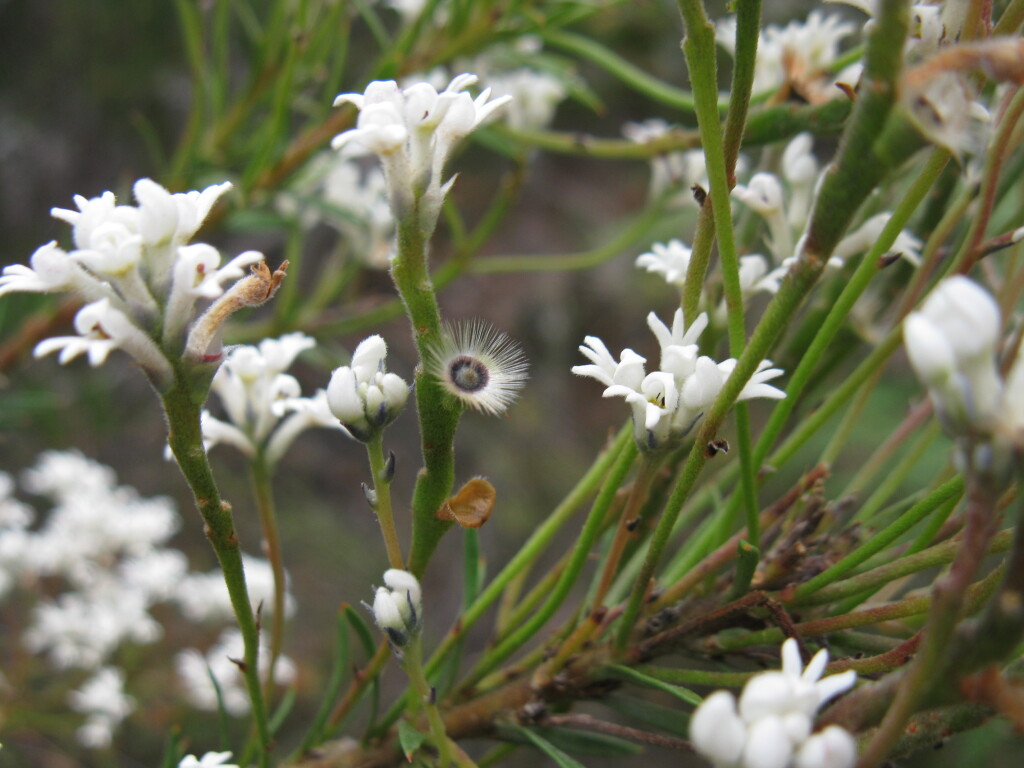Conospermum
Shrubs or subshrubs. Leaves alternate, simple, entire, more or less sessile. Inflorescences axillary or terminal, spike-like, often aggregated into corymbose panicles, long-pedunculate, usually much longer than leaves. Flowers zygomorphic, sessile, single, subtended by a persistent sheathing bract. Tepals usually white, cream or bluish, coherent in a tube; limb 2-lipped, upper lip usually broad, entire, lower lip with 3 narrow spreading lobes; stamens inserted at base of limb, filaments short and thick, uppermost anther perfect, lateral anthers imperfect and at first united with upper anther, separating at anthesis, lowermost anther abortive, reduced; hypogynous glands absent; ovary sessile, comose at apex, ovule 1; style filiform, dilated near centre, tip dilated with a short lateral stigma, not modified into a pollen presenter. Fruit a small obconical achene, pubescent, apex flat or concave, crowned with a ring of long hairs; seed single, conical, sometimes with a circular membranous wing.
About 40 species currently recognized, from all States, but most species endemic to south-western Western Australia.
Jeanes, J.A. (1996). Proteaceae. In: Walsh, N.G.; Entwisle, T.J., Flora of Victoria Vol. 3, Dicotyledons Winteraceae to Myrtaceae, pp. 830–887. Inkata Press, Melbourne.
 Spinning
Spinning


